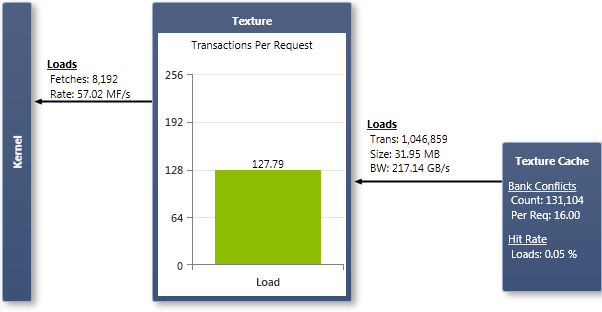Chart

Texture
Each time a warp executes a texture function to read from texture memory, this counts as a single fetch. The Texture chart shows the number of fetches and the fetch rate. A texture fetch is a memory request, which incurs transactions from the texture cache. Transactions from the texture cache are 32 byte units.
Note that this chart does not include global read only data accesses (using const __restrict__ or the __ldg() intrinsic), which also use the texture cache. For those, see Global Memory.